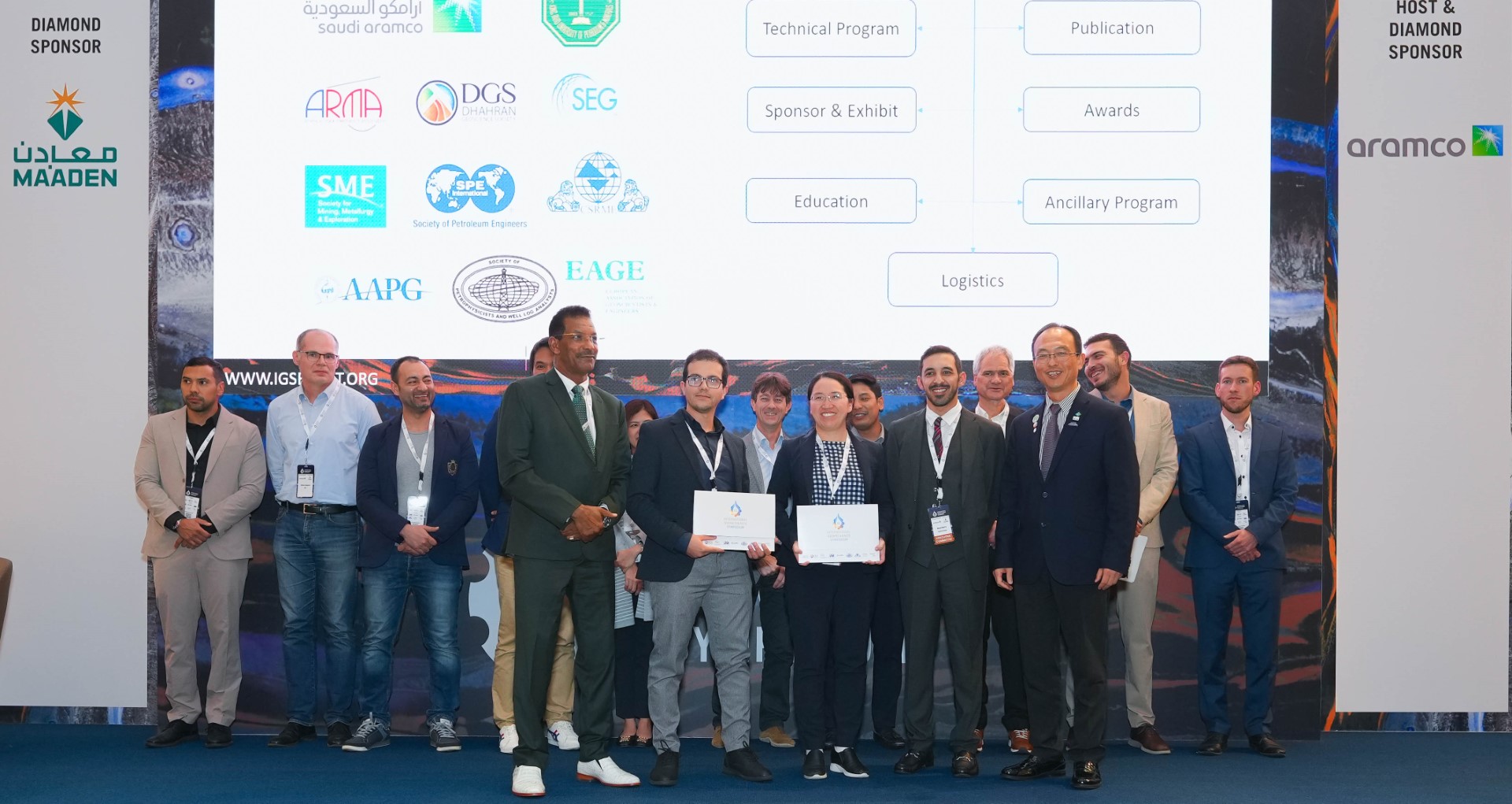
Kareem Aboayanah, a PhD candidate under the supervision of Prof. Giovanni Grasselli, and co-authors were awarded the Best Student Paper award at the International Geomechanics Symposium 2023.
The award was presented at IGS Event 2023 hosted by Aramco in Al-Khobar, Saudi Arabia in October 2023. Aboayanah gave a presentation on his research to date titled “Investigating Thermal Gradient Cracking and Fracture Process Zone Development in Granitic Rocks“. His PhD research aims to provide deeper understanding of the thermal cracking phenomena in granite. Aboayanah’s paper presents a novel approach using both laboratory experiments and numerical simulations to explain the evolution of the thermoelastic stresses in rocks and the mechanisms responsible for the cracking.
The phenomena of granite crack openings and the development of the thermal gradient fracture process zone are still not fully understood. Thus, the methods and approaches currently used for their tracking are not suitable. “Granite is a heterogeneous and complex underground material that undergoes thermoelastic stress due to disturbance of the underground temperature field, caused by high-temperature underground heat storage. When these stresses exceed rocks tensile strength they initiate cracks. I’m using both laboratory experiments and numerical simulations to explain the evolution of the thermoelastic stresses in rocks and the mechanisms responsible for the cracking,” comments Aboayanah. His research is a significant step toward reducing uncertainty and risk planning and design of a wide range of developments such as geothermal systems exploration, oil recovery, nuclear waste repositories, etc.
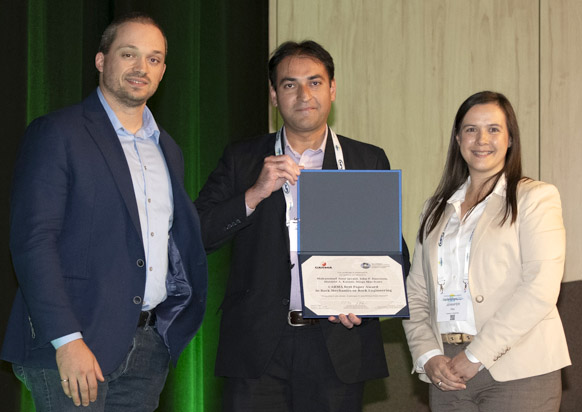
Amir Javaid, a PhD candidate under the supervision of Prof. John Harrison, and co-authors were awarded the CARMA 2023 Best Paper award in Rock Mechanics or Rock Engineering.
The award was presented at GeoSaskatoon 2023 conference organized by the Canadian Rock Mechanics Association (CARMA) and the Canadian Geotechnical Society (CGS) in October 2023. Authors of the paper, Analyzing in situ stress: challenges in quantifying stress domains, include Javaid, Prof. Harrison, Dr. Hossein Kasani (NWMO) and Dr. Diego Mas Ivars (SKB Sweden).
Javaid is conducting his PhD research on characterization of in situ stress using Bayesian methods. Their paper presents a novel approach for quantifying uncertainty in stress domain boundaries using Bayesian segmented linear regression of overcoring stress data against depth of measurements.
Currently, there is a lack of robust and universally agreed methods for objectively characterizing the variability in in situ stress and this task is critical to the design of sensitive structures such as nuclear waste repositories. Javaid’s research is a significant development for the use of novel methods and techniques for characterization of in situ stress for the design of nuclear waste repositories.
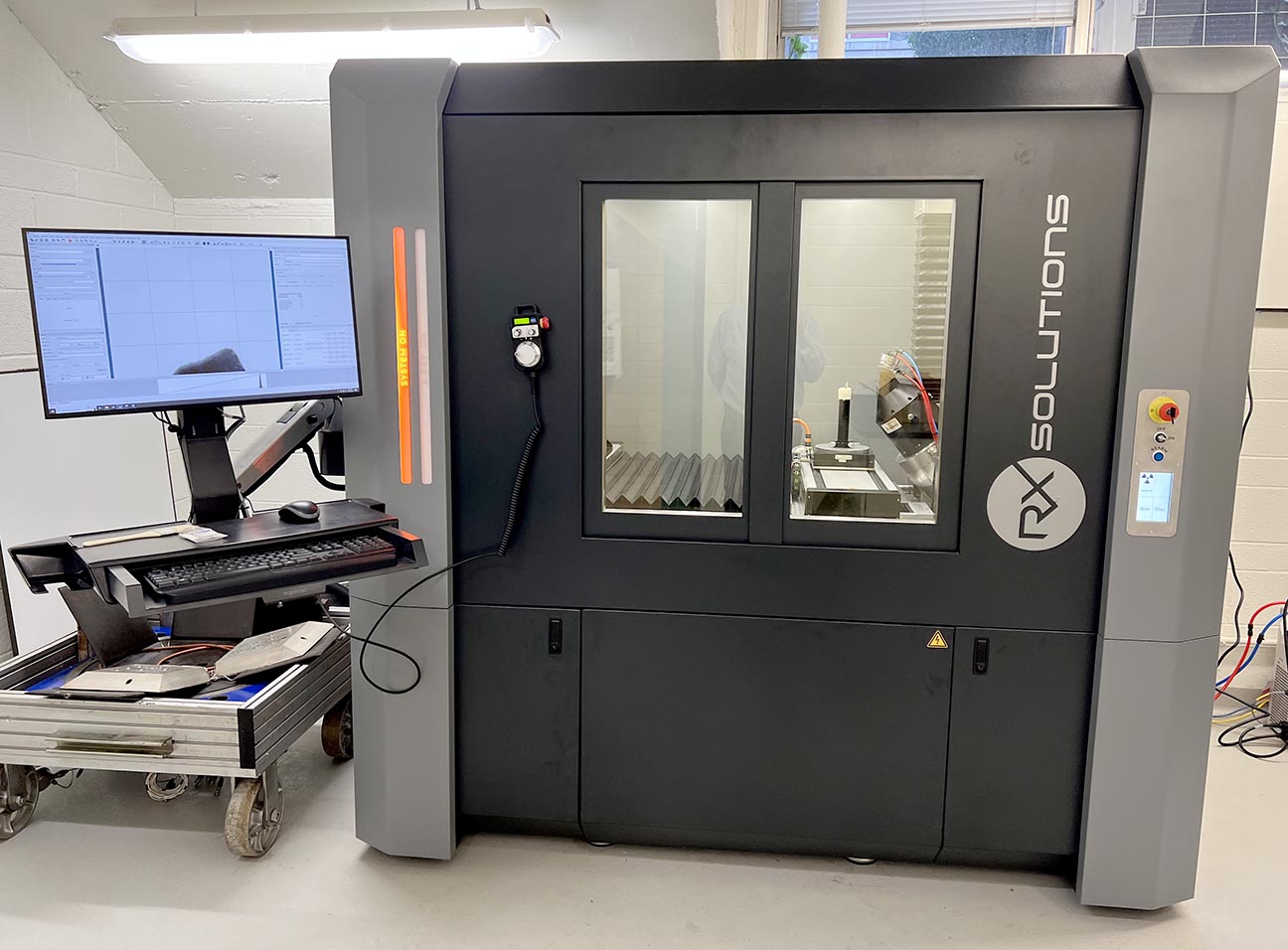
A new device in CivMin’s repertoire of high-tech machines allows researchers to peer inside solid objects. Using X-ray and computed tomography (CT) scans, the new system enables detailed 3D imaging in a non-destructive manner, literally allowing the unseen to become seen, and displayed upon a screen, with incredible detail.
This technology is of benefit not simply at CivMin, predominantly for the study of layering and fractures within rock specimens, but also for other departments and faculties at U of T and beyond. Imagine peering into solid objects without damaging the exterior or opening a sealed container, such as a very old manuscript with pages fused together, embedded objects within a block of ice, or even remains contained in ancient, unopened pottery.
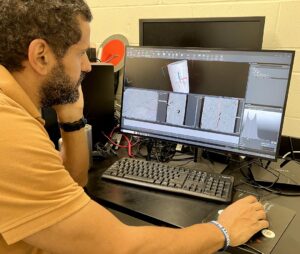
X-ray micro computed tomography (micro-CT) is a non-destructive imaging technique capable of characterizing the internal microstructure of materials in three dimensions at micron-level resolution. The concept of this technique is based on the sectioning of an object with many radiographs captured at different angles. These radiographs are formed by the partial absorption of the X-ray energy into the object and with the rest passing through, corresponding to density and material thickness, consequently revealing the internal structure.
In the context of research within Grasselli’s Geomechanics Group (GGG), the micro-CT is a state-of-the-art tool which will elevate the quality of the research by enabling the 3D investigation of materials before, after, and even during experiments. Using the data, a 3D digital image of the rock can be produced allowing for the physical study of macro-features like planes of heterogeneity and disconformities to more microscopic applications such as micro-cracks and pore network. Advanced machine learning techniques and artificial intelligence methods can be leveraged on the image volume to provide fracture morphology characteristics, as well as those of the pore spaces such as its size distribution, interconnections, and tortuosity, as well as the segmentation of the various phases present in the sample or identify connectivity pathways.
Funded through the Canada Foundation for Innovation Evans Leaders Fund (CFI-JELF), Prof. Giovanni Grasselli and the Transparent Lab have purchased the RX Solutions EasyTom 230 Micro-CT X-Ray System. The RX Solutions EasyTom Micro-CT is an industrial high-energy CT System capable of imaging the internal structure of objects in a fast, non-destructive manner. It allows researchers to accurately examine internal and external structures to address the most challenging 3D applications ranging from material research to industrial applications in research and development, quality assurance, and production.
Watch a 3D view of a scan using a Micro-CT X-Ray System
Credit: Ms. Mei Li (PhD Candidate) and Mr. Earl Magsipoc (PhD Candidate)
The EasyTom Micro-CT can generate image volumes with voxel sizes down to 4 µm with a detection area of 320 mm in diameter and 530 mm in height and can image payloads with a mass of up to 20 kg. It is equipped with six motorized axes to position the sample and detector with up to 590 mm displacement stroke. The EasyTom has a tube voltage range of 0-220 kV and a tube current range of 0-1000 µA, with a maximum power of 200 W. From the set of vertically acquired radiographs, a mathematical algorithm integrated in the EasyTom X-Act software suite helps to streamline acquisition, enhances reconstruction with advanced corrective algorithms, and provides an automated workflow all the way through scanning, reconstruction, and inspection steps.
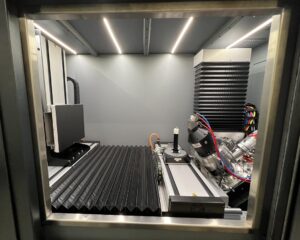
(Photo by Phill Snel, CivMin)
The current research work undertaken within the research group and benefits gained from the acquired micro-CT align with the current trajectory of the geoenergy sector, such as the National Resources Council (NRC) Canada Advanced Clean Energy program: Hydrogen. Hydrogen storage in subsurface salt-caverns is going to be a key aspect for the energy transition in Canada. Through direct X-ray micro-CT imaging, it will be possible to improve our understanding of the complex multiphysics phenomena associated to H2 rapid cycle injections in salt caverns necessary to develop sound legislation and safety protocols.
Within the scientific community, and that of the University of Toronto, the benefits are endless and extend way beyond rock mechanics. The EasyTom Micro-CT at the Transparent Lab will support cutting edge research within a variety of fields, for example:
- Dental – Medical Science: Track the development and remodelling of bone structure to understand bone/dental implant materials (e.g., titanium, dental epoxy) as well as impacts of gut microbiome on bone structure throughout life.
- Fluid Mechanics – Water Treatment: Image phase transition processes in ice as well as understanding multiphase and biogeochemical processes for clean energy applications, carbon sequestration, and various groundwater remediation technologies.
- Mining – Environment: Evaluating changes in soil pore structure in wetlands and bioretention cells when subjected to freeze-thaw cycles, and quantifying the potential for accumulation of suspended solids and microplastics.
- History: Reveal the internal structures and identify writing and origins of invaluable and fragile manuscripts to study the global evolution of book technology and characterize construction materials (e.g., types of paper, wood, ink etc.).
By Aly Abdelaziz (PhD Candidate) with Phill Snel
October 25, 2023 | CityNews
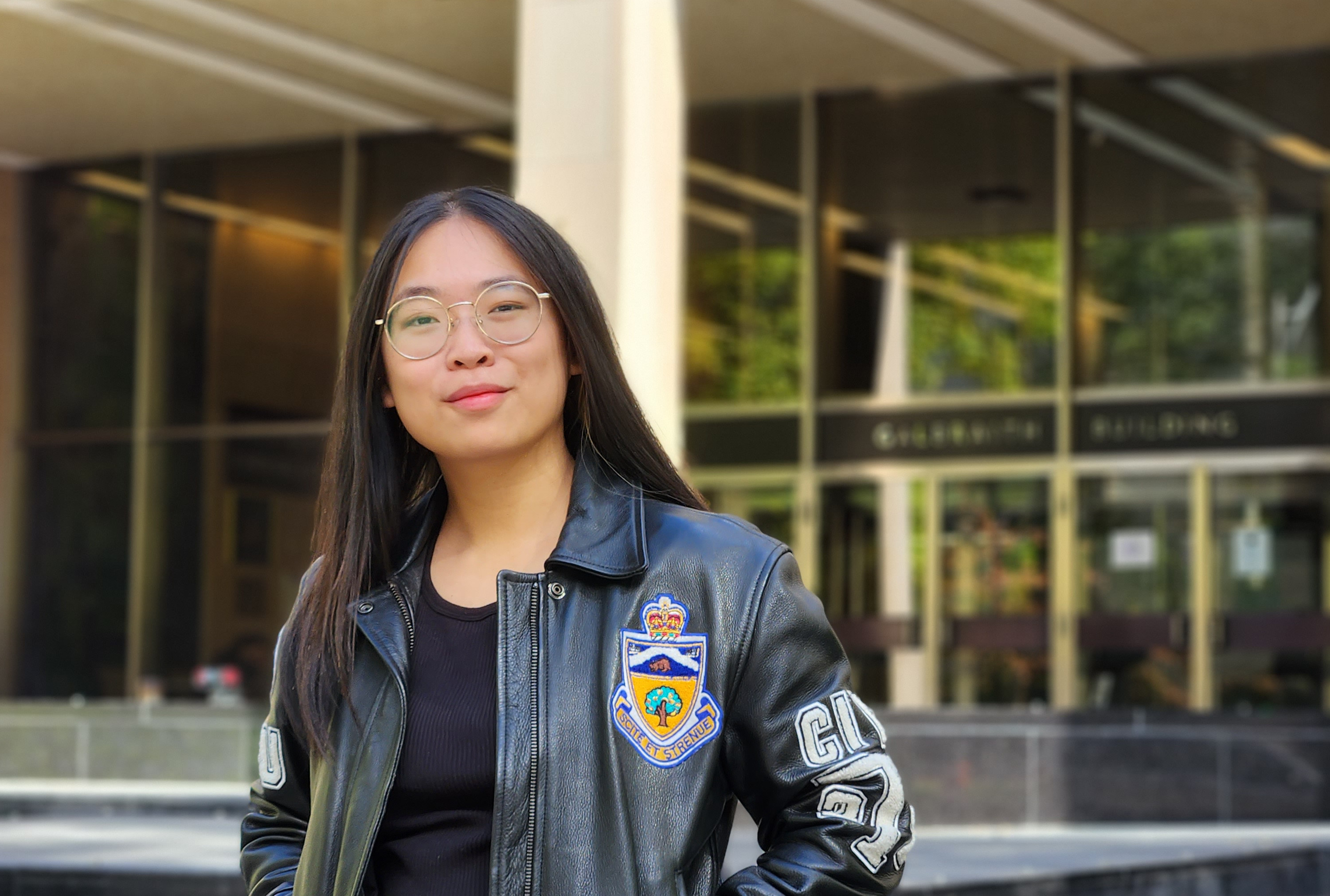
We’re checking in with the newly elected leaders of CivMin Student Clubs. The CivMin Graduate Students’ Association (CivMin GSA) recently held elections to select their new executive.
Here’s our Q&A with newly elected CivMin GSA President Andria Liu (CivE MEng candidate).
Could you please introduce yourself?
I’m Andria Liu. I am currently in my second, and last, year of my Master of Engineering (MEng) Program. MEng is a course-based program and I’m currently doing an emphasis in Construction Management and Entrepreneurship, Leadership, Innovation and Technology in Engineering (ELITE).
Why you’ve decided to focus on those Emphasis?
I’m working for a general contractor The Miller Group, and the company works in heavy civil engineering. We are currently working on the expansion of Highway 401 – I apologize for the traffic in advance! Our company does a lot of different projects along the 401, on a massive 10-km stretch of road. For instance, road rehabs, road bases, and bridge structures. I’ve done that for four summers now and I decided if I’m going to do a master’s, might as well continue it in what I’m involved with at work because I do plan on staying with the company.
As for ELITE, I really like that it offers a variety of courses, compared to the stereotypical engineering courses. One course I’m taking right now is The Happy Engineer (Positive Psychology for Engineers). Honestly, it’s fun and a nice little break compared to the usual pace of courses. This course feels like a little mini-therapy session. It’s to reevaluate and look inward to yourself to make you happy.
What do you like to do in your spare time?
I’m a little swamped nowadays because I am working full-time and finishing my master’s at the same time. A new hobby I picked up was learning how to play the saxophone I just bought the other week. I already know how to play piano, guitar and electric bass.
Why did you decide to get your master’s degree at U of T?
Well, the first reason is because I did my undergrad here (CivE 2T2), and I do believe in U of T being one of the best possible choices when you want to do your engineering degree in Canada. I’m already familiar with the place, I love it so, I’ve decided to stay.
Why did you decide to apply for MEng program?
I wasn’t passionate enough about anything specific to go into a MASc, and do thesis-based research, but I wanted to continue my studies. For me, it basically feels like an undergrad 2.0 where you can do more specialized courses in what you’re specifically interested in. Ultimately, it will just be a nice little bonus on my resume at the end of the day.
Do you have a favorite place in Toronto?
I have a new favourite place I discovered last week. It’s the Lazy Cat Café that just opened last month. They have over 12 cats, all different sorts of breeds. Your payment includes a drink and an hour to sit in there to enjoy the company. It’s perfect if you don’t have one or cannot have cats at home. Highly recommend.
What’s your favorite place on campus?
I like The Pit (Stanford Fleming Atrium) when it’s quiet and not crowded with people trying to have their lunch.
Do you have a study spot?
I don’t study too much on campus anymore because I moved back home. During my undergrad, I lived in the Chestnut residence. I loved the study spot in the penthouse; it had a nice view of Nathan Phillips Square and a good environment. In this study area you are surrounded by fellow stressed engineers, which makes you feel less lonely. Nowadays, I mostly work from home or in a nearby library.
Could you tell me about GSA in general? What’s what is this?
The CivMin Graduate Students’ Association is a way to connect the graduate students in the Department of Civil and Mineral Engineering with activities that are happening on campus. We often do collaborations with other councils. The biggest draw we have is our Industry Night event which happens every year around February. We invite a bunch of industry professionals to campus to network with our students. We also do a lot of small events: occasional pizza parties and coffee breaks we invite students to, as well as bigger events like pub nights that happen once a semester.
Why did you decide to go for the presidency?
Last year, I worked as the Social Director for GSA. Throughout my undergraduate studies, I have always been actively involved in extracurricular activities. I worked at the school council and designed graphics for F!rosh Week (the first-year orientation program for that year) as a part of Skule™ team. I have been in and out of exact roles, but nothing was quite as serious as being the President of the Graduate Students Association. The primary reason I decided to run for President was because I had the advantage of observing the council operate for a full year, so I felt it would be easier to organize all the activities for our Association. I also I have a few new ideas for the GSA.
What are your goals for this year?
I want to bring in new ideas and see GSA grow. The main goal for me this year is to get more people aware of the association. Another goal would be to expand the GSA’s industry network and invite more professionals to our Industry Night. This event focuses on networking, communication, and building future relationships and is not just limited to hiring. Besides, I believe it is essential to collaborate more with the various groups available on campus
How can people get involved and how they can find you guys?
We have a website and Instagram. We always post all of our new events on Instagram.
How do people can become a part of GSA?
For the actual executive members, those nominations go out at the end of September every year and the election period the week after for those people who would be in office for a full year. As for involvement, you can always show up to the events we create the events for the students. We encourage them to take advantage of the coffee, pizza and resources.
Any final words and fancy quote from you?
Enjoy your great experience, I’d say. This is definitely a unique time and once you go into the full-time employment, you’ll have fewer “magical experiences” like this. Enjoy your time!
Full list of 2023/2024 GSA Club Executives:
President: Andria Wan Ning Liu
Finance Director: Jenil Savla
Communication Director: Sahil Rafique Shaikh
Academic Director: Hamzah Mamoon Smadi
External Director: Sepehr Javidan
Social Director: Krupa Mahendra Patel
Social Director: Bhabishya Khaniya
Social Director: Mohaddsesh Abdolhosseini
Athletics Director: Rouhollah Ayazian
Rep: Tabassum Masoodakhtar Saheb
Rep: Priya Jadav
By Galina Nikitina
CivMin celebrates 150 years of Engineering at U of T with the Engineering Open House
Thank you to all of our alumni, friends, guests and volunteers for joining us.
U of T Engineering celebrated its 150th anniversary, with a Faculty-wide Open House on Saturday, October 14, 2023. Our Department of Civil & Mineral Engineering (CivMin) organized lab tours, displays of memorabilia, old and new technology, as well as student-run clubs.
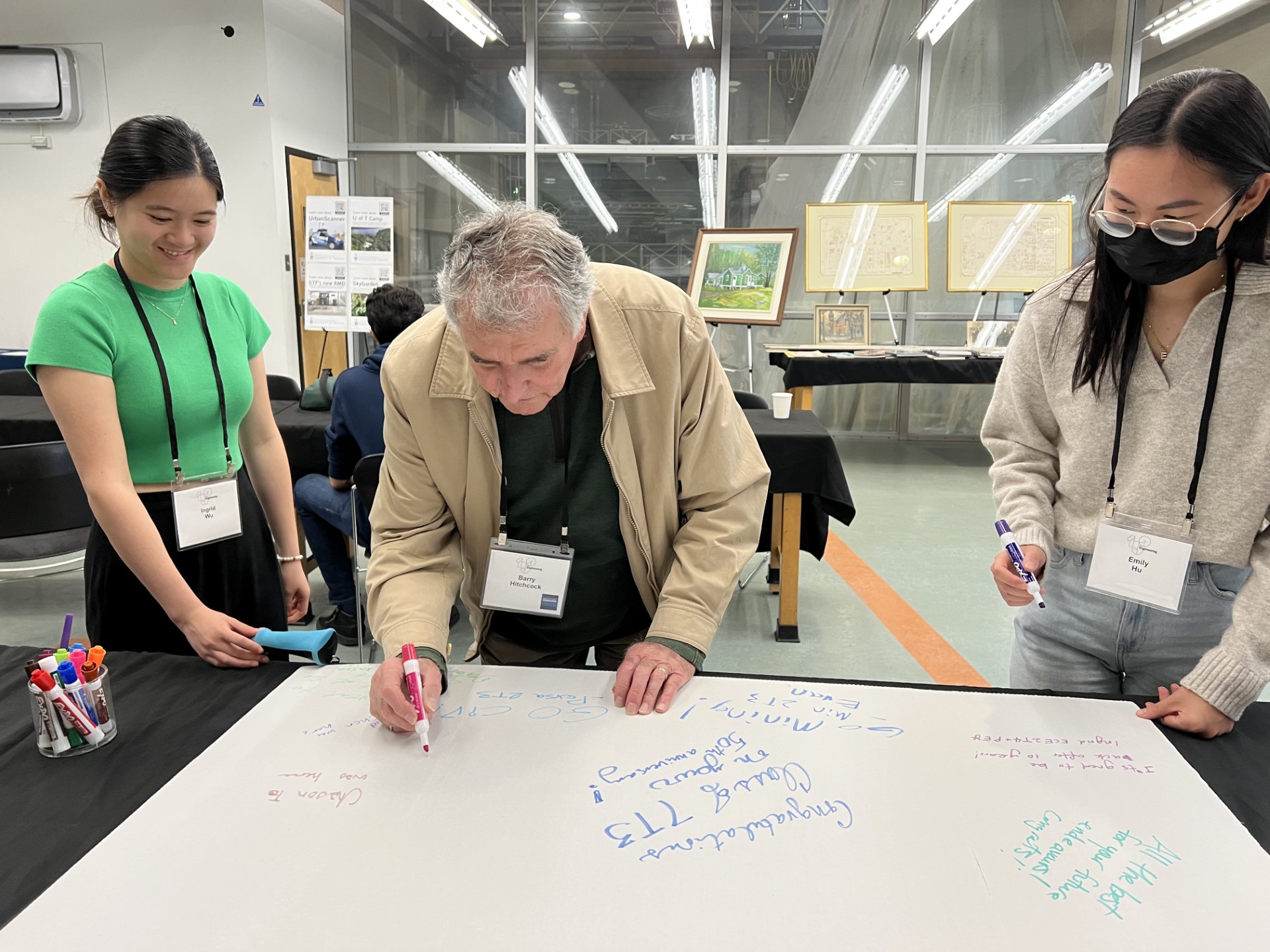
We had the distinct pleasure of catching up with a great number of our alumni. Among the visitors attending were some of our friends from 5T8, 6T9, 7T0, 7T7, 9T8, 9T9, 0T7, 0T8, 2T2 and more.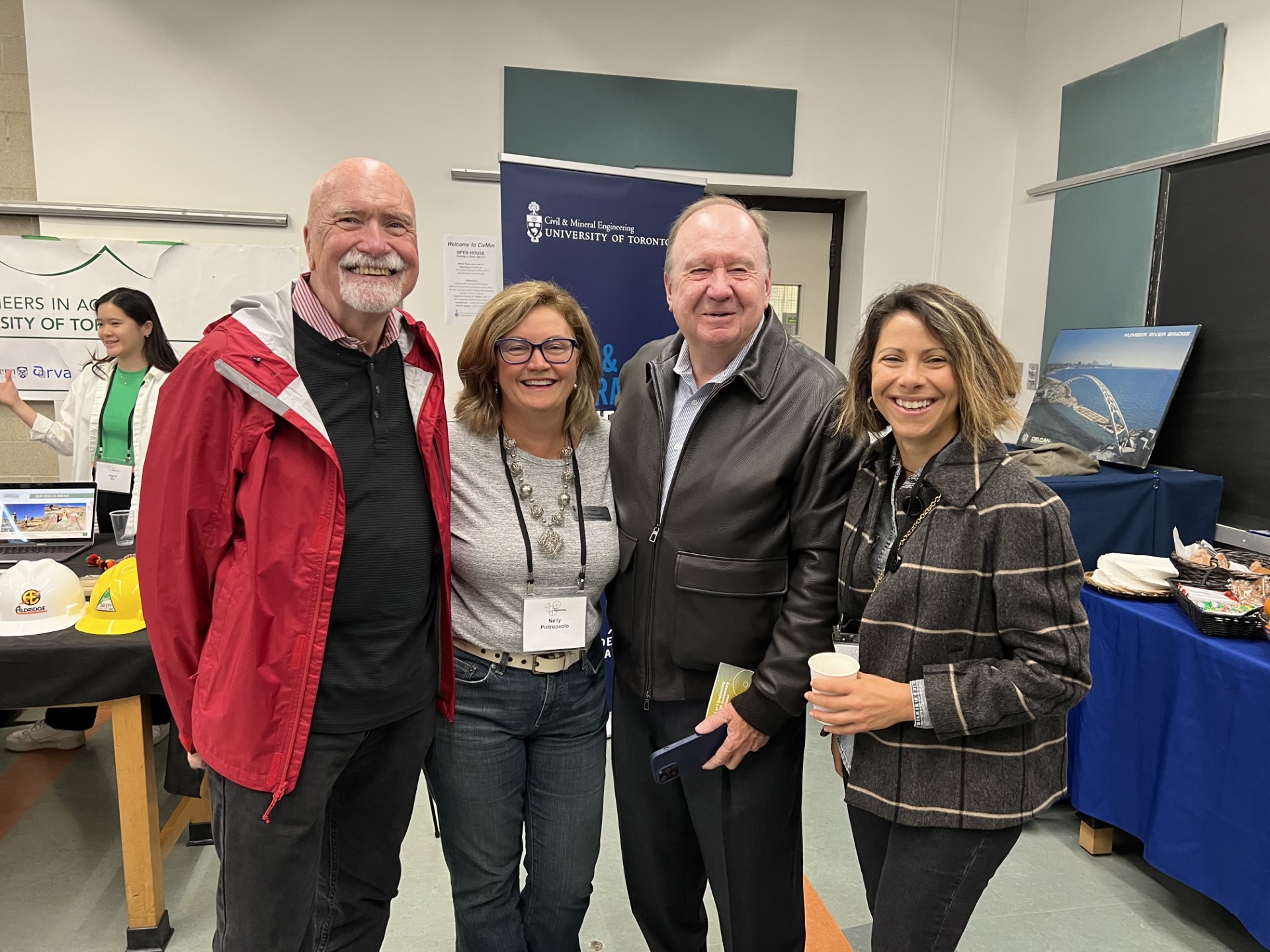
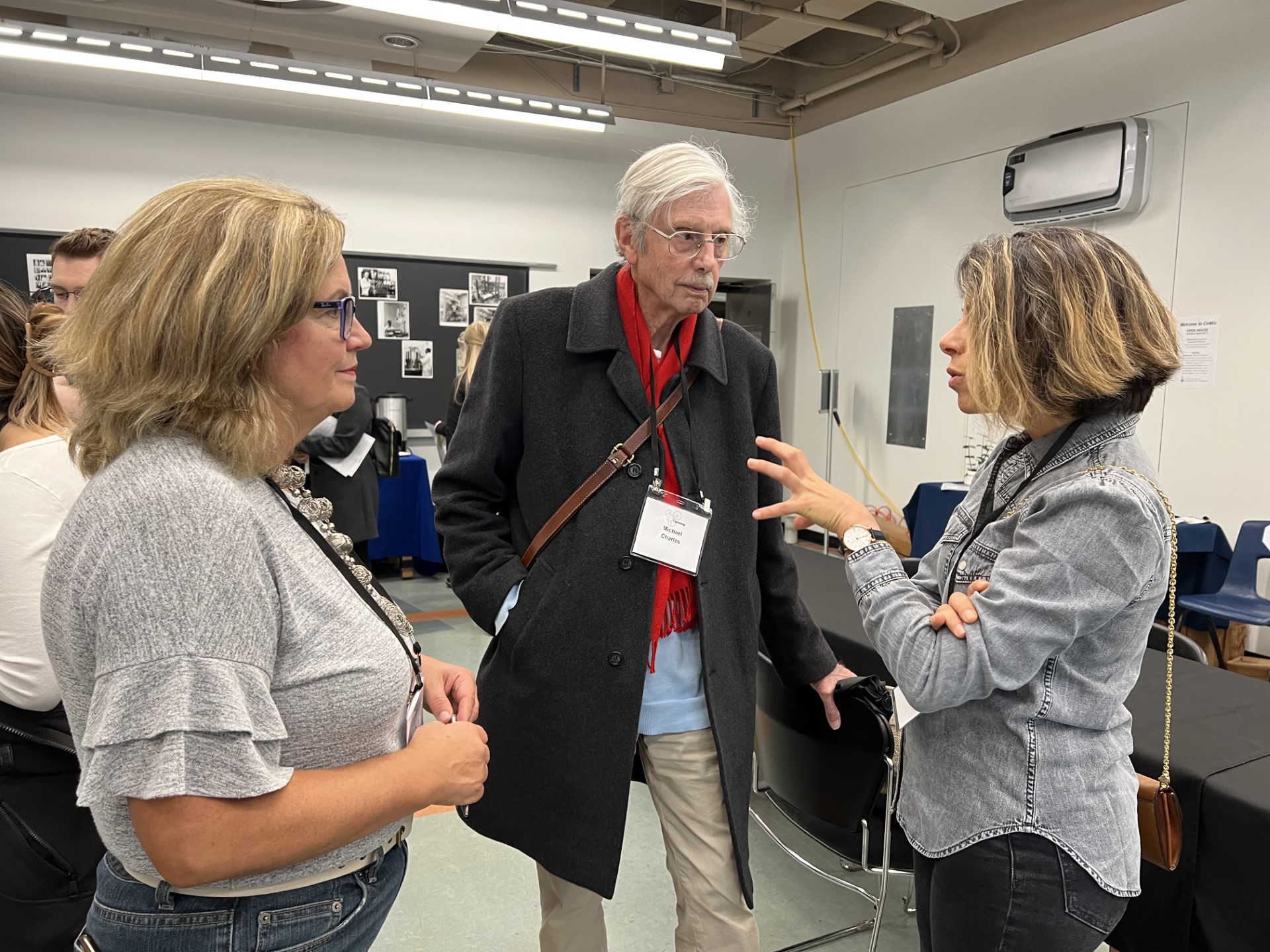

Our hourly tours of the Structural Testing Facilities (STF) and Rock Fracture Lab attracted many interested visitors, including several (we hope) future engineers. Guests were fascinated by the scale of lab spaces and the opportunity to see the machines not usually open for public access, and hidden behind closed doors.
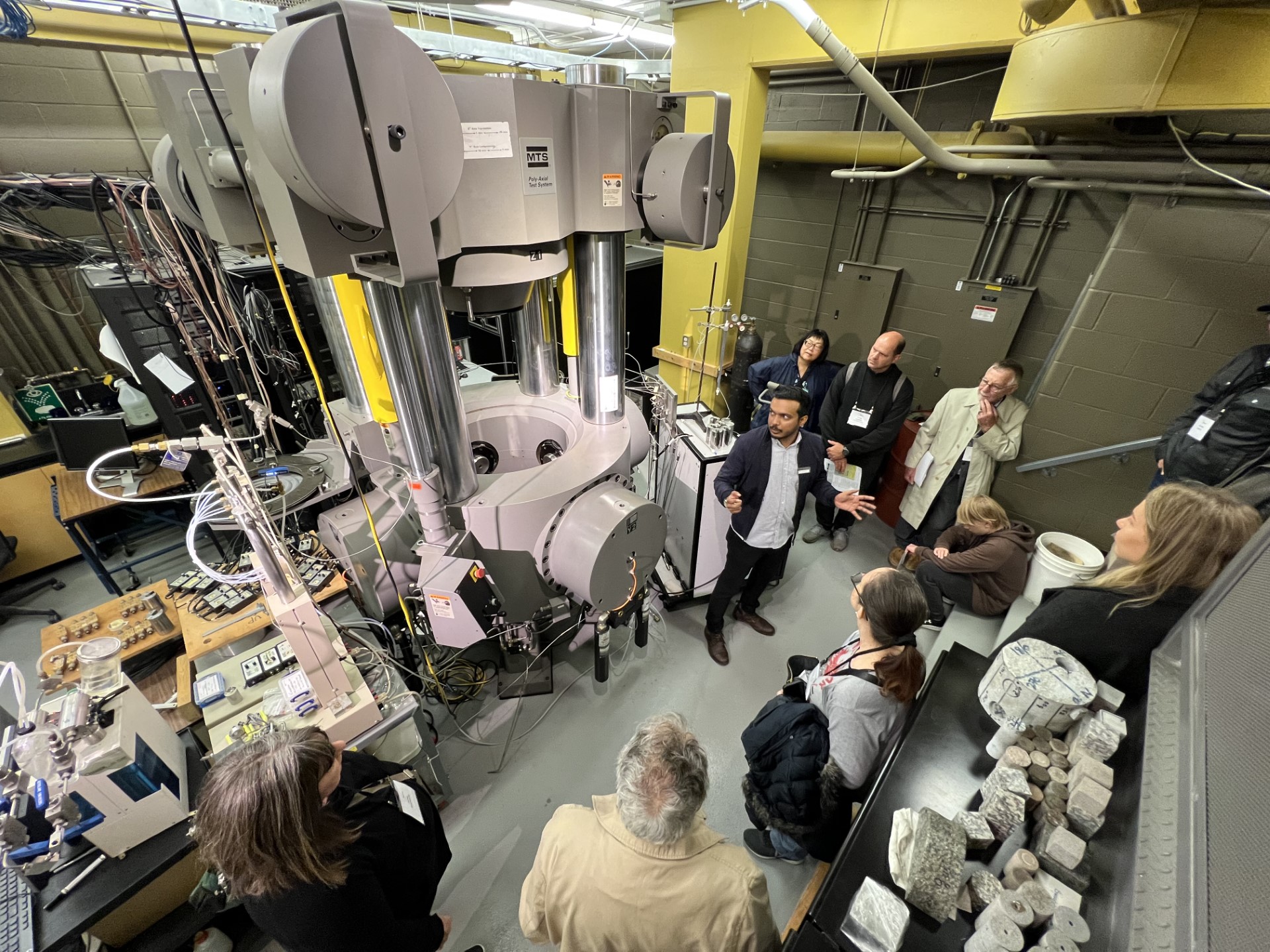
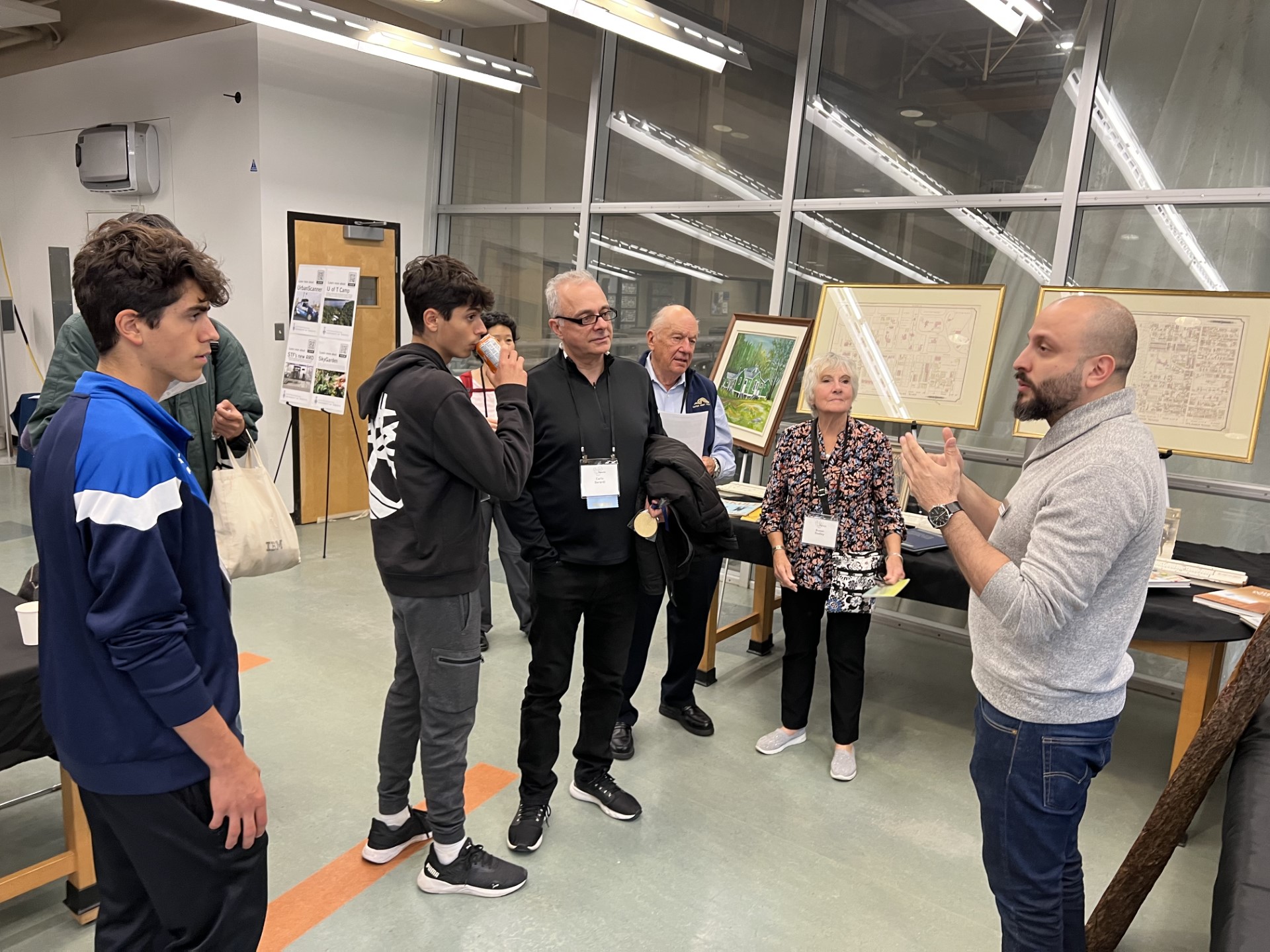
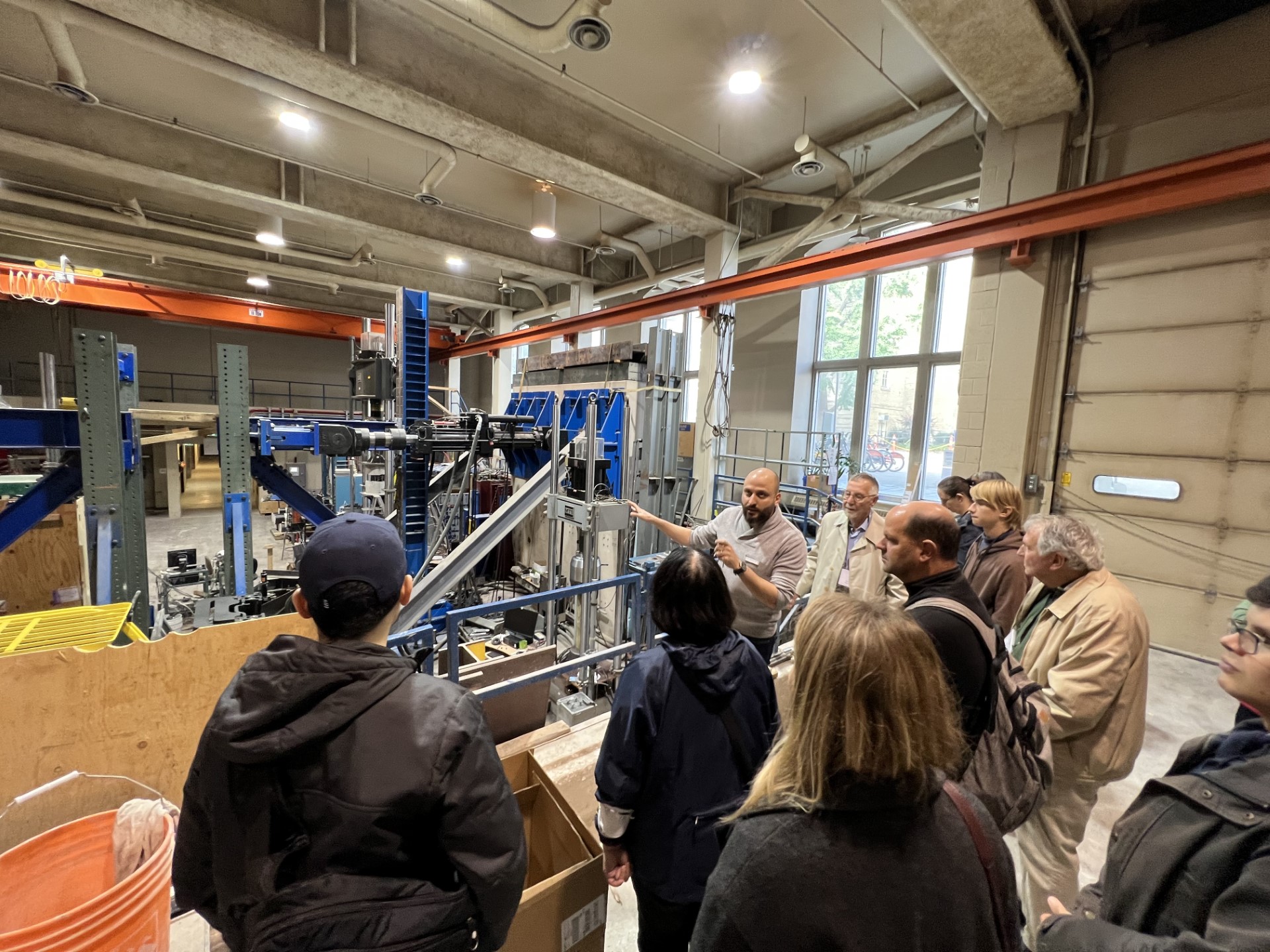
Our Civ Club, Min Club and Engineers in Action U of Toronto Chapter leaders chatted with potential students and their parents for 3 hours straight.
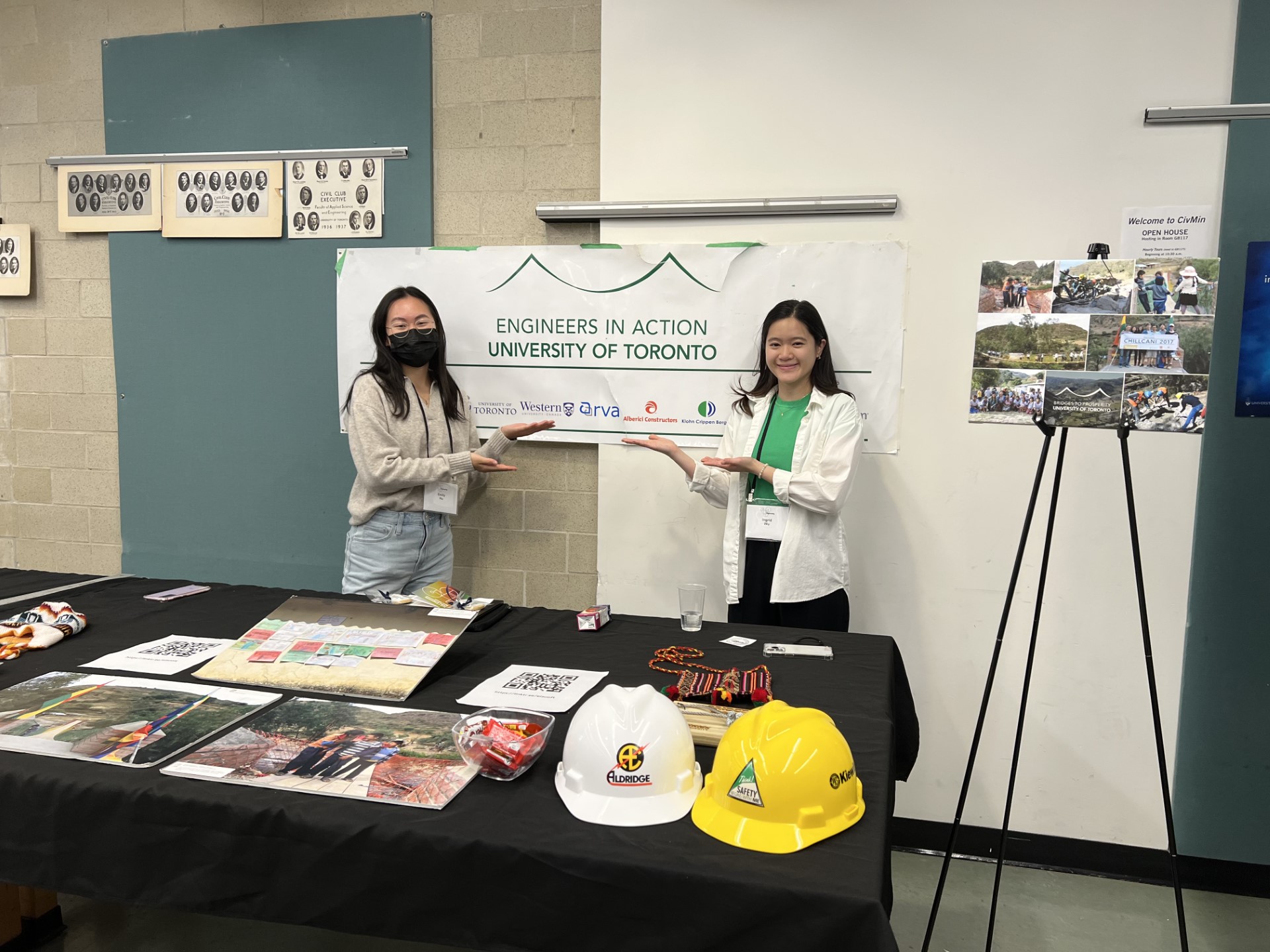
Did you know both Civil Engineering and Mineral Engineering are among the oldest Engineering programs at U of T? Some of the earliest photos we displayed are dated 1901 (Civ Class of 1901), and some documents of similar vintage, circa 1906.
Our U of T Camp had several tables and screens displaying our memories from the property first purchased in 1919. Our display had both old and current tech used at Camp, along with photos of students taking the course in over the span of the last century. Time flies as fast as the UAV (drone) our professors recently used to create a detailed topographic map of the Highway Curve at Camp – a modern update to the assignment as part CME358 – Civil and Mineral Practicals (CAMP).

CivMin also featured UrbanScanner, a mobile testing laboratory on wheels, on the Galbraith Building steps. Constructed and driven by researchers in the Transportation and Air Quality (TRAQ) group led by our CivMin Chair, Prof. Marianne Hatzopoulou, the vehicle takes detailed measurements of air pollution, and much more, as it travels.
By Galina Niktina
October 12, 2023 | University of Toronto Magazine
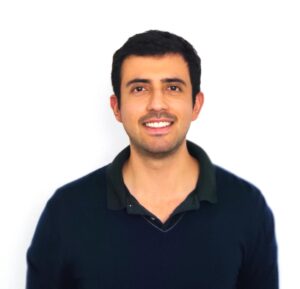
Dr. Carlos Rivera-Gonzalez, a postdoctoral fellow working with Prof. Matthew Roorda in Department of Civil & Mineral Engineering to lead the CLUE (City Logistics in the Urban Economy) project, has been awarded the prestigious Lee Schipper Scholarship Award. It is for transformative research proposals to challenge conventional wisdom awarded by Volvo Research and Educational Foundations (VREF) and the Urban
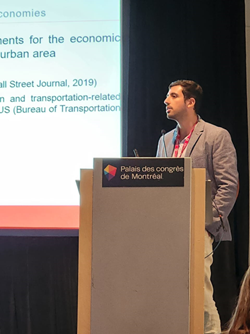
Mobility program of the World Resources Institute (WRI) Ross Center for Sustainable Cities.
Dr. Rivera’s proposal titled “Transforming Urban Logistics: Demand-Centric Policy Impacts on Freight Efficient Land-Uses” will answer the research question of whether optimal locations for distribution centers are sensitive to changes in demand management policies (e.g., consolidation of cargo). Solving this research question is of significant relevance to urban areas considering how land-use policy changes (e.g., changes in zoning) might take several years to achieve benefits. On the contrary, demand management policies produce an almost instantaneous impact.
More information about the Lee Schipper Scholarship Award can be found on the VREF website: https://vref.se/lee-schipper-scholarship/
This article originally posted by the Smart Freight Centre
U of T Engineers in Action (EIA) students team up to connect separated communities in rural Bolivia.

Solving real-world problems is a worthy goal for any student looking to become an engineer, but usually something envisioned as only possible after graduation. The chance to get involved in a real hands-on project in another country, with the ability to have a substantial and immediate impact on the lives of an entire community, is one some of our very own CivMin students got to fulfill this spring.
U of T Engineering students from the all-volunteer group Engineers in Action (EIA) have once more completed a bridge-building project for a community in need. The EIA U of T Student Chapter joined forces with their counterparts at the University of Alberta (U of A EIA) to successfully design and build a suspended footbridge linking the rural residents near the Suraj Mayu community in Bolivia [ED NOTE: the bridge is visible in the satellite view].

The interdisciplinary group, including students from several U of T Engineering departments, combined their skills with guidance and support from Arup and faculty advisor Prof. Brent Sleep.
Luna Amador (CivE 2T2 + PEY), Co-President of EIA U of T Chapter, offers up the on-the-ground perspective, “It’s neat to see, when you look at the maps or even the satellite views, you realize just how rugged the terrain is and how isolated they are. If they want to go a that short distance across the other side, it’s quite an extraordinary journey to make. By building this bridge, you really get to help this community come together more easily.”
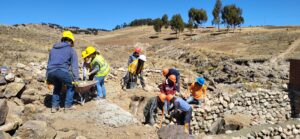
This year’s project, completed this past May, is located near the Suraj Mayu community, in the department of Cochabamba in Bolivia. It is isolated by the presence of a river within a ravine. The bridge spans over the Suraj Mayu River, which is usually impassable for nearly half the year – from October to March – due to heavy rainfall. The completion of this footbridge alleviates the community’s isolation, providing them with reliable and safe access to essential services, such as school, healthcare, and economic opportunities.
For the seventh consecutive year, Engineers in Action (EIA) University of Toronto Student Chapter partnered with Arup to help deliver a pedestrian footbridge in a remote Bolivian community.
The U of T group received the guidance of Senior Engineer in Bridges and Civil Structures at Arup, Maxime Bellefeuille who is based in Montreal, along with several of his colleagues. A total of five working engineers were providing valuable insight and feedback, including Felice Lam (Toronto), Jorge Cobo (Chicago), Mark Fisher (San Francisco) and Casie Venable (San Francisco).
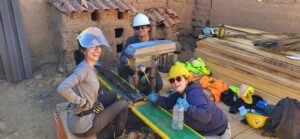
Bellefeuille has a history with assisting the U of T EIA team, “A co-worker of mine, who used to work in Toronto, knew I had been involved with Bridge to Prosperity in the past, so he forwarded me the details and I got interested, so I started helping out on the first-year’s project. Then it bloomed into what we have now – a seven-year partnership.”
With Arup’s assistance, the team received mentorship, advice and reviews of the University team’s formal reports, so they could complete their design package by April 2023, including project planning, design development and construction plans. With the help of the local community, the bridge was successfully completed and inaugurated a week ahead of schedule.
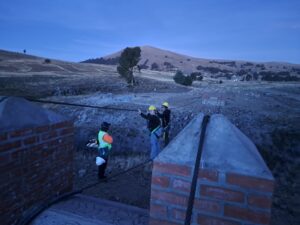
Besides engineering and technical expertise, there are contracts, logistics and more to look after. “Prof. Sleep helped us navigate agreements and contracts so we could help EIA and Arup come to agreements on various points. It was very helpful to have him navigate this for us,” says Amador. “We’ve gone through quite a process to plan, then build, but it’s so satisfying to see the community get this bridge with an expected lifespan of 25 years or more. So it’s a long-lasting impact we’ve made.”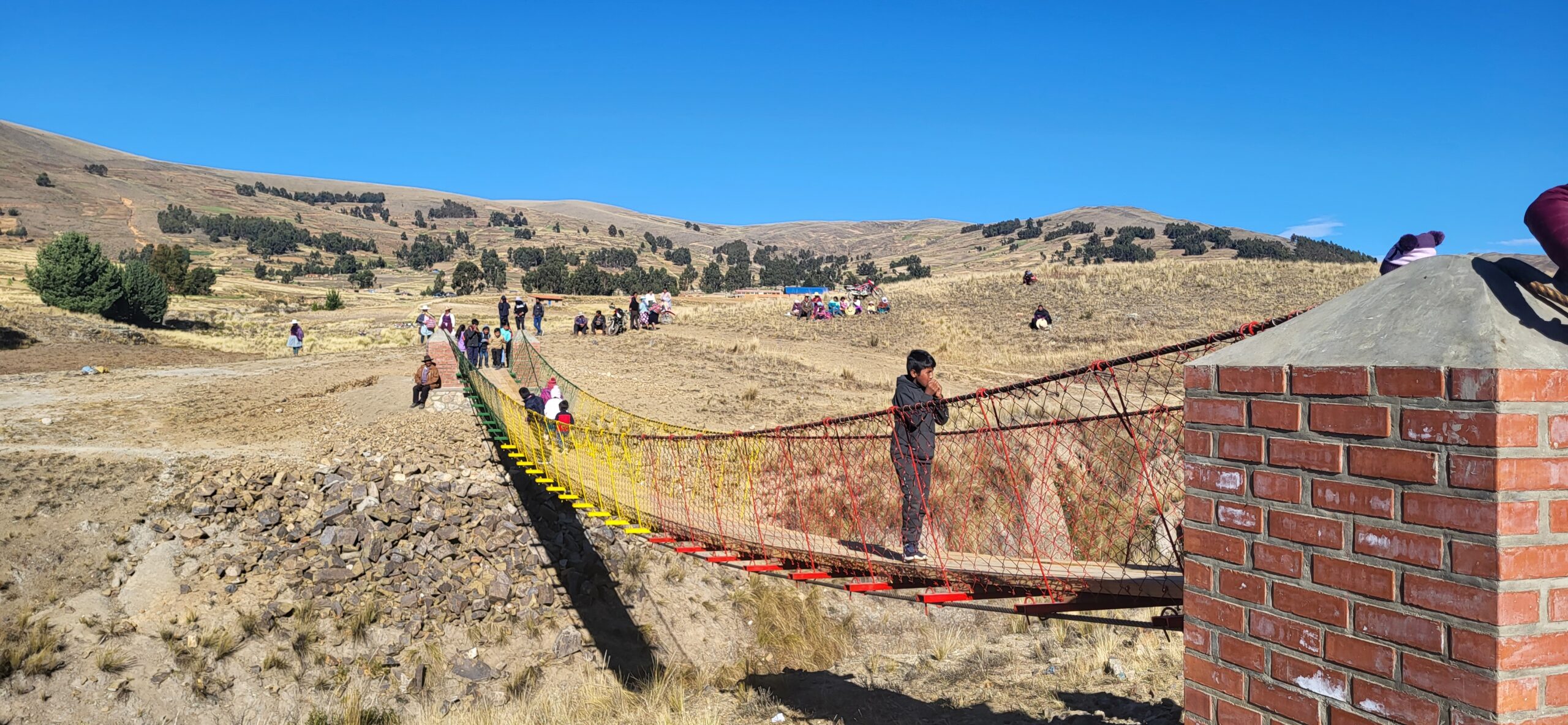


Recalling the satisfaction of completing the build, Amador offers, “Overall, 950 inhabitants of the area will now benefit from the bridge, out of the total population of 1,100 in the area. Another fun detail of our stay is the community housed our team in a large classroom in the school. During construction we would sleep and relax there after the work day.”
The successful completion of the footbridge project exemplifies the positive impact the EIA U of T Student Chapter, along with the support of Arup, can have on isolated communities. The successful project not only provided improved access to essential services but also strengthened community bonds and resilience. This year’s project marks the first time the U of T team travelled to site since the COVID pandemic.
By Phill Snel
Last year’s project (2022) involved a build near Quinamara, Bolivia.
EIA U of T has a an upcoming Bridge Building Competition on Saturday, October 7, 2023. The registration due date is Wednesday, October 4, 2023. If registration has passed, but you would like to attend, please contact the event organizer, Hoda via email at hoda.eissa@mail.utoronto.ca
Engineers in Action (EIA) is an international non-profit organization whose mission is to support development of sustainable systems and infrastructure with underserved communities, local experience, and global partners. Since 2006 in EIA’s Bridge Program, hundreds of students from 30+ universities across the globe have designed and built 80+ footbridges alongside rural communities in 11 countries. Through their work, they have helped connect nearly 150,000 previously isolated people to essential resources.

Professor Mohammed Basheer joins the Department of Civil & Mineral Engineering as an Assistant Professor as of October 1, 2023.
CivMin spoke with Professor Basheer to learn more about his research direction, passion for teaching, and what attracted him to Toronto. He has relocated from Germany to join our Department.
“We wholeheartedly welcome our newest faculty member to the Department,” says CivMin Chair Marianne Hatzopoulou offering her greetings. “Students will benefit from the exciting new elements Professor Basheer brings to the Department in teaching and research. Join us in offering our newest professor a warm welcome to CivMin.”
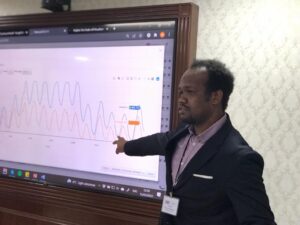
Q: Can you tell us a little about yourself as an introduction (education, where you're from, etc).
I am Sudanese. I grew up and did my primary and secondary education in a town in central Sudan called Wad Medani. I moved to the capital of Sudan, Khartoum, to study Civil Engineering at the University of Khartoum, followed by two years of work in the private sector, where I contributed to water engineering projects in West Africa. Then I moved to Cologne, Germany, where I did a master's degree in Integrated Water Resources Management at Cologne University of Applied Sciences. After that, I worked at the same university as a Research Associate for about a year and a half, conducting research work on water management in East Africa. Following that, I moved to Manchester, the United Kingdom, where I did my Ph.D. in Civil Engineering (focusing on water engineering and economics) at The University of Manchester and then worked as a Research Fellow at the university for one year. Then I moved back to Germany, but this time to Berlin, as a Research Fellow at Humboldt University of Berlin, funded by Alexander von Humboldt Foundation. I like watching and playing soccer, playing squash, hiking, and experiencing different cultures and foods. My native language is Arabic; I speak English fluently and German at an intermediate level. I have been a Manchester United fan through and through since childhood.
Q: Could you explain the focus of your research?
Coupled human-natural systems, such as river basins, have supported civilization throughout history by providing critical services such as water, food, and energy. But the pressure on these systems is mounting faster than ever due to population growth, economic development, urbanization, and lifestyle changes. My research focuses on developing methods and tools that can help plan efficient human interventions in river basins, considering engineering, social, political, economic, and environmental dimensions to provide essential water, energy, and food services, help achieve sustainable development goals, and adapt to and mitigate climate change and other future uncertainties. Such interventions could include, for example, building or removing infrastructure (such as dams or irrigation schemes) or changing the management policies of existing infrastructure. I spent several years creating methods and tools for designing infrastructure management and expansion plans for politically tense transboundary water resource systems (e.g., the Nile Basin), integrating simulation methods, artificial intelligence techniques, and stakeholder engagement.
Q: Why did you choose U of T?

Several reasons encouraged me to join the University of Toronto, from which I can mention a few. First and foremost, the University of Toronto has a longstanding reputation for academic excellence. It consistently ranks among the top universities globally and is renowned for its rigorous academic programs and distinguished faculty. Joining such a prestigious institution allows me to be part of a community committed to pushing the boundaries of knowledge and fostering intellectual growth.
Second, the University of Toronto has a diverse and inclusive environment. With vibrant multicultural campuses, the university fosters an enriching learning environment. This diversity of ideas and experiences enhances the educational experience for both students and faculty and prepares students to thrive in a globalized world. Third, the University of Toronto is known for its strong research. It houses world-class research facilities and provides ample opportunities for interdisciplinary collaboration.
As a professor, this research environment enables me to pursue my scholarly interests and make a meaningful impact on society. Lastly, Toronto as a city offers a wealth of opportunities beyond academia. It is a multicultural hub with a thriving arts and cultural scene, diverse industries, and a strong sense of community. Being situated in such a cosmopolitan city provides an enriching experience for me and offers valuable connections and collaborations that can benefit my research and my students' professional development.
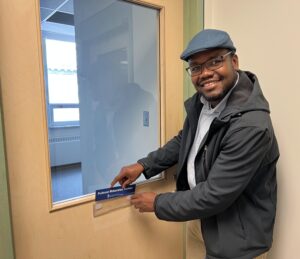
Q: What are you most looking forward to in your new position?
I look forward to establishing research collaborations within the Department of Civil & Mineral Engineering and beyond. I am excited to start teaching and interacting with students. I am enthusiastic about establishing a network with water management organizations in Canada and globally to address the pressing challenges river basins face.
Q: As a new professor, what one piece of advice would you give to new students?
In his book "Outliers," Malcolm Gladwell states, "It is not the brightest who succeed... Nor is success simply the sum of the decisions and efforts we make on our own behalf. It is, rather, a gift. Outliers are those who have been given opportunities—and who have had the strength and presence of mind to seize them." As a student at the University of Toronto, you have a fantastic opportunity before you. Make sure to have the strength and presence of mind to take full advantage of it, and be assured that your abilities and intelligence can develop through dedication, hard work, and perseverance. Additionally, remember that the educational journey is as significant as the ultimate goal. So, embrace and relish the process along the way.

Q: What do you hope to accomplish in your new position/during your time at U of T Engineering?
I hope to build a world-class interdisciplinary research group that studies river basins from engineering, social, political, economic, and environmental angles and has a tangible impact on policymaking and societies. I hope to achieve this through accurate simulations of natural resources systems and their interactions with human systems, using artificial intelligence to facilitate planning future intervention decisions in natural resource systems, and actively engaging with stakeholders to ensure demand-driven research and co-production of outcomes.
I hope to contribute to educating the next generation of environmental engineers who will make a difference. I plan to tie research and teaching activities to ensure that students benefit from my research and be involved in research activities.
Q: What is the most memorable experience in your career so far?
For me, public outreach through mainstream media has been both memorable and challenging at times. As I have worked on designing management approaches for transboundary water resource systems for several years, I have noticed that mainstream media exhibits a strong appetite for this topic, particularly when political tensions exist between nations. However, I have come to realize that the media often seeks attention-grabbing headlines, requiring me to exercise great care in my explanations to avoid misrepresentation. Despite the intricacies involved, I engage with the media with pleasure as it contributes to having an immediate real-world impact.
Q: Finally, is there anything fun/unusual/unexpected about yourself you'd like to share with our CivMin audience?
I have an affinity for maps. From traditional paper maps to digital interactive maps, I appreciate their beauty and utility. I often spend hours creating maps using modern-day software and picking their colors. It gives me a great deal of relaxation!
Connect with Professor Mohammed Basheer:
Professor page: https://civmin.utoronto.ca/home/about-us/directory/mohammed-basheer/
Twitter: https://twitter.com/Moh_Basheer17
GoogleScholar: https://scholar.google.com/citations?user=KM_oVpkAAAAJ&hl=en
ResearchGate: https://www.researchgate.net/profile/Mohammed-Basheer-9